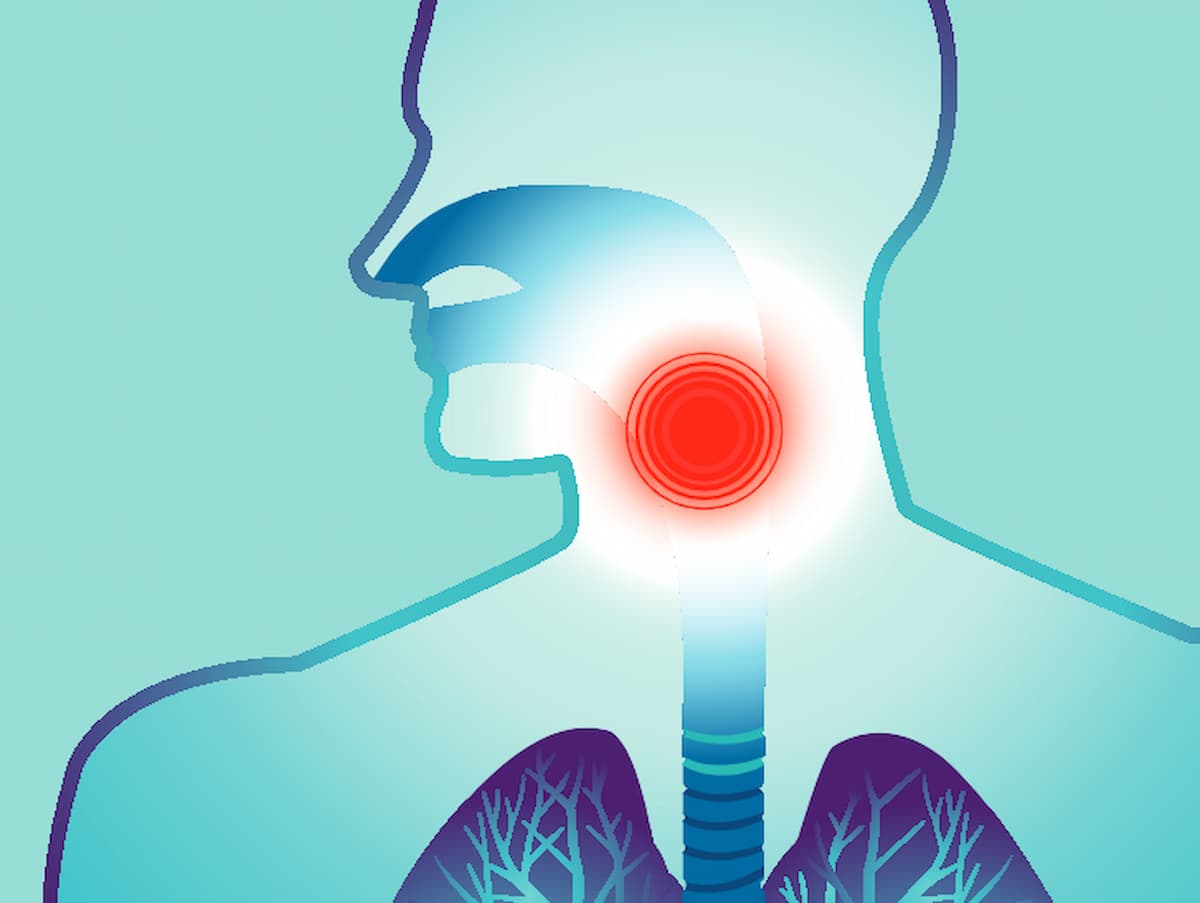AI-Based Model May Improve Prediction of ECE in Oropharyngeal Cancer
Findings suggest that harnessing the tumoral node microenvironment may improve the ability to predict extracapsular nodal extensions in patients with oropharyngeal carcinoma.
"AI-ing microenvironment of nodal metastasis enhances of ECE prediction in patients with oropharyngeal cancer," according to the study authors.

The use of artificial intelligence (AI) in the microenvironment of nodal metastasis may increase the accuracy of predicting extracapsular nodal extension (ECE) in patients with oropharyngeal carcinoma, according to findings presented in a poster at the 2024 American Society for Radiation Oncology (ASTRO) Multidisciplinary Head and Neck Cancers Symposium.
The use of support vector machine (SVM) plus linear discriminant analysis (LDA), when employing 24 radiomics features and removing correlated features, produced an accuracy of 75.5% (0.76 area under the curve [AUC]) in detecting ECE. Additionally, SVM/LDA was 72.6% (0.61 AUC, 0.41) accurate when using 10 topological features. Accuracy was increased to 81.1% (0.8 AUC) when combining the radiomic and topological features during analysis.
SVM plus LDA, when implementing 51 radiomics features, yielded 84.9% (0.87 AUC) accuracy after removing correlated features. SVM and LDA was 80.2% (0.79 AUC) accurate when investigators employed 33 topographical data analysis (TDA) features. When combining radiomics and TDA features, the accuracy of detecting ECE improved to 90.6% (0.93 AUC).
When investigators added human papillomavirus (HPV) status to the multi-machine learning model, they reported that accuracy increased to 92.5% (AUC, 0.95). This method resulted in a true-positive rate of 100% and a true-negative rate of 90%.
“AI-ing microenvironment of nodal metastasis enhances of ECE prediction in patients with oropharyngeal cancer,” Annie W. Chan, MD, an oncologist and radiation oncologist, director of the Head and Neck Radiation Oncology Research Program, and director of Head and Neck Service at Massachusetts General Hospital, and co-authors wrote in the poster. “The results need to be confirmed with multi-institutional datasets.”
Authors wrote that deintensifying treatment for patients with early-stage oropharyngeal carcinoma typically included administering surgery with or without adjuvant radiotherapy and omitting the use of concurrent chemotherapy. However, the pathologic presence of nodal ECE signaled the need for postoperative chemotherapy in this population.
In a radiologist-based decision system, CT imaging followed by subsequent visual evaluation from radiologists determined the extent of ECE in patients, which thereby informed treatment decision-making. Patients with ECE-positive disease received radiation plus chemotherapy, and those with ECE-negative disease underwent transoral surgery or neck dissection. Following this procedure, patients who still had ECE-negative disease continued with radiotherapy, whereas those who were found to have ECE-positive disease switched to radiation plus chemotherapy.
According to the investigators, the use of clinical annotations or CT imaging with machine learning and deep learning algorithms have predicted ECE with AUCs ranging from 0.58 to 0.85, which they described as “less than optimal”.
Investigators hypothesized that involved nodes and peritumoral environments in patients with oropharyngeal cancer collectively played a role in determining the presence of ECE. They designed a study to evaluate whether the use of AI-based tools in microenvironment of nodal metastases could assist their ability to predict ECE.
Overall, 171 patients with newly diagnosed resectable oropharyngeal carcinoma received upfront transoral robotic surgery and neck dissection between 2016 and 2022 at Massachusetts General Hospital and Massachusetts Eye and Ear Infirmary. Investigators preoperatively performed high-resolution CT scans for each patient, who were determined to have no evidence of ECE based on assessment from experienced head and neck radiologists. Moreover, a head and neck pathologist assessed the pathology of surgical specimens in these patients, which included the absence or presence and extent of ECE.
Investigators defined the perinodal microenvironment as the stromal tissues surrounding the nodes as detected via preoperative CT imaging. Additionally, radiomics and topological features were extracted from the nodal and perinodal microenvironment to generate predictions of detecting ECE.
Reference
Paul R, Richmon J, Chan AW. AI-ing microenvironment improves prediction of extracapsular nodal extension in oropharyngeal carcinoma. Presented at the 2024 American Society for Radiation Oncology Multidisciplinary Head and Neck Cancers Symposium; February 29-March 2, 2024; Phoenix, Arizona. Abstract 133.